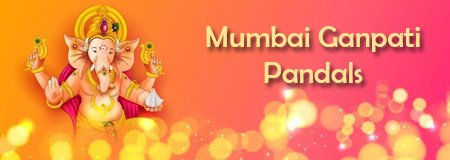Sri Chaitanya Mandir
Chaitanya Mahaprabhu (IAST: Caitanya Mahāprabhu; born Vishvambhar Mishra) was a 15th-century Indian saint who is considered to be the combined avatar of Radha and Krishna by his disciples and various scriptures. Chaitanya Mahaprabhu’s mode of worshipping Krishna with ecstatic song and dance had a profound effect on Vaishnavism in Bengal. He was also the chief proponent of the Vedantic philosophy of Achintya Bheda Abheda Tattva. Mahaprabhu founded Gaudiya Vaishnavism (a.k.a. the Brahma-Madhva-Gaudiya Sampradaya). He expounded Bhakti yoga and popularized the chanting of the Hare Krishna Maha-mantra.He composed the Shikshashtakam (eight devotional prayers).
Chaitanya is sometimes called Gauranga or Gaura due to his molten gold–like complexion. His birthday is celebrated as Gaura-purnima. He is also called Nimai due to him being born underneath a Neem tree Chaitanya Mahaprabhu (IAST: Caitanya Mahāprabhu; born Vishvambhar Mishra) was a 15th-century Indian saint who is considered to be the combined avatar of Radha and Krishna by his disciples and various scriptures. Chaitanya Mahaprabhu’s mode of worshipping Krishna with ecstatic song and dance had a profound effect on Vaishnavism in Bengal. He was also the chief proponent of the Vedantic philosophy of Achintya Bheda Abheda Tattva. Mahaprabhu founded Gaudiya Vaishnavism (a.k.a. the Brahma-Madhva-Gaudiya Sampradaya). He expounded Bhakti yoga and popularized the chanting of the Hare Krishna Maha-mantra. He composed the Shikshashtakam (eight devotional prayers).
Chaitanya is sometimes called Gauranga or Gaura due to his molten gold–like complexion.His birthday is celebrated as Gaura-purnima. He is also called Nimai due to him being born underneath a Neem tree Life Deity of Shadabhuja Gauranga at Ganga Mata Math in Puri.
Chaitanya means “one who is conscious” (derived from Chetana, which means “Consciousness”); Maha means “Great” and Prabhu means “Lord” or “Master”. Chaitanya was born as Vishvambhar Mishra, the second son of Jagannath Mishra. Jagannath and his wife, Sachi Devi, the daughter of Nilambara Chakravarti, were both Brahmins of Sylhet.Jagannath Mishra’s family were from the village of Dhakadakshin in Srihatta (Sylhet), and later migrated to Nabadwip. The ruins of their ancestral home still survive in present-day Bangladesh.
Yogapith temple at Chaitanya Mahaprabhu’s birthsite established in the 1880s by Bhaktivinoda Thakur in Mayapur, West Bengal.
According to Chaitanya Charitamrita, Chaitanya was born in Nabadwip (in present-day West Bengal) on the full moon night of 18 February 1486, at the time of a lunar eclipse.
A number of stories also exist telling of Chaitanya’s apparent attraction to the chanting and singing of Krishna’s names from a very young age,[15] but largely this was perceived as being secondary to his interest in acquiring knowledge and studying Sanskrit. When travelling to Gaya to perform the Śrāddha ceremony for his departed father, Chaitanya met his guru, the ascetic Ishvara Puri, from whom he received initiation with the Gopala Krishna mantra. This meeting was to mark a significant change in Chaitanya’s outlook and upon his return to Bengal the local Vaishnavas, headed by Advaita Acharya, were stunned at his external sudden ‘change of heart’ (from ‘scholar’ to ‘devotee’) and soon Chaitanya became the eminent leader of their Vaishnava group within Nadia.[citation needed]
After leaving Bengal and receiving entrance into the sannyasa order by Swami Kesava Bharati,Chaitanya journeyed throughout the length and breadth of India for several years, chanting the divine names of Krishna constantly. At that time He travelled on foot covering a lot of places like Baranagar, Mahinagar, Atisara and, at last, Chhatrabhog. Chhatrabhog is the place where Goddess Ganga and Shiva met, then one hundred mouths of Ganga were visible from here. From the source of Vrindavana Dasa’s Chaitanya Bhagavata, he bathed at Ambulinga Ghat of Chhatrabhog with intimate companions with great chorus-chanting (kirtan). After staying one night he set for Puri by boat with the help of Local Administrator Ram Chandra Khan. He spent the last 24 years of his life in Puri, Odisha, the great temple city of Jagannath in the Radhakanta Math. The Gajapati king, Prataprudra Dev, regarded Chaitanya as Krishna’s avatar and was an enthusiastic patron and devotee of Chaitanya’s recitation (sankeertan) gatherings. It was during these years that Chaitanya is believed by his followers to have sunk deep into various Divine-Love trances (samādhi) and performed pastimes of divine ecstasy (bhakti).
Vrindavan, the land of Radha Rani, the “City of Temples” has more than 5000 temples to showcase the pastimes of Radha and Krishna. The essence of Vrindavan was lost over time until the 16th century, when it was rediscovered by Chaitanya. In the year 1515, Chaitanya visited Vrindavan, with the purpose of locating the lost holy places associated with Krishna’s transcendent pastimes. He wandered through the different sacred forests of Vrindavan in a spiritual trance of divine love. It was believed that by His divine spiritual power, he was able to locate all the important places of Krishna’s pastimes in and around Vrindavan including the seven main temples or sapta devalay, which are worshiped by Vaishnavas in the Chaitanya tradition to this day.
















